SPEKYNG RYBAWDY | MELANIE JACKSON

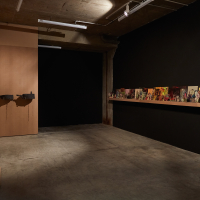

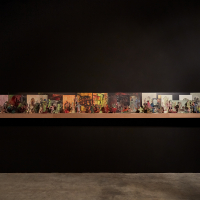
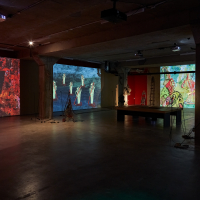
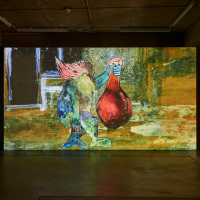
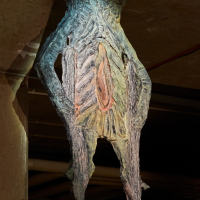
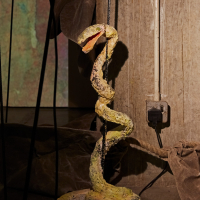
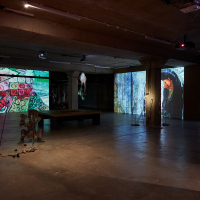
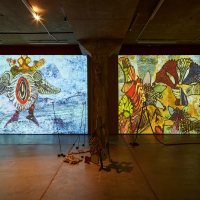
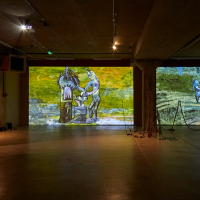
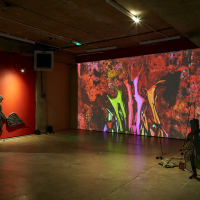
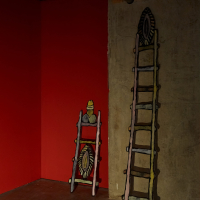
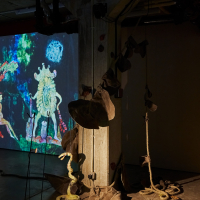
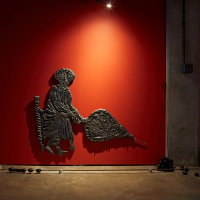
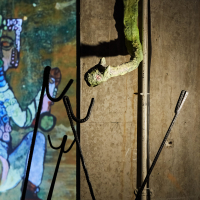

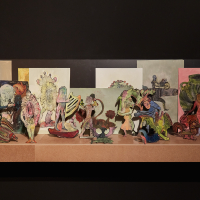
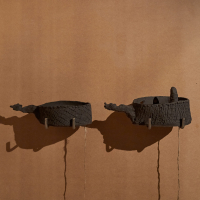
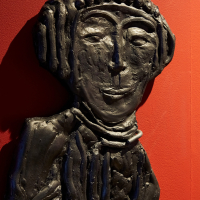
Spekyng Rybawdy
Melanie Jackson
22nd April – 28th May 2022
Thursday – Saturday: 11 am – 5pm
Exhibition Essay by Hettie Judah | please click here to read
Block 336 is very pleased to be showing Spekyng Rybawdy, the latest and most ambitious incarnation of Melanie Jackson’s ongoing project exploring the transgressive narratives and explicit symbolism of Medieval pilgrim bawdy badges. Through a carnival of colourful, erotically charged characters, Spekyng Rybawdy encourages us to re-examine not only our ideas about who took part in the production and circulation of imagery in the medieval period – but also how this might enable us to reconsider the origins of dissenting representations, sexual politics and our attitudes and behaviours today.
Bawdy Badges, secular badges, sexual badges or erotic pins from the 12th to the 16th Century have been discovered across much of northern Europe, often along the pilgrim routes that crisscrossed the continent at that time. They were mass produced by local crafts people, usually out of tin or lead and made by and for the everyday working-class individual, who would sew them onto the outside of their clothing or pin them to their hats. Frequently decorated with bright luminescent colours, the low-relief badges, baring all the hall marks of folk, Roman or Etruscan influence, typically depict obscene sexual encounters or wandering oversized genitalia, often hybridised, held aloft, or legged and running rogue. Not unlike the memes of today, these badges were frequently borrowed, traded, reproduced and appropriated as part of a commons of visual cultural currency.
Whilst the rude, lewd and wildly libidinous iconography of the badges is obvious, and a likely cause for their omission from the 14th and 15th Century art historical canon, it is their sophisticated satirical humour which troubled art historians since, as it does for many today. Far from foolish jokes, the badges true power to shock and offend lies in their complex dialogue with, and profane subversion of – the state politics, orthodox religion, and conventional sexual practices of their day. Each badge would have communicated to a visually literate public an ironic or satirical message about something raw and unspoken at the heart of their lives and society.
Jackson’s work in the exhibition, advances a conversation that has been quietly playing out in the field of academia and medieval studies. In her installation, the viewer is invited to wander amongst larger than life projected animations, cut-out figures and body bits, handmade clay objects, drawings and more. Jackson has rallied together a procession of pilgrims, a carnival of conceptual nomads that jostle and jive, fight, fuck and take flight across a trans-historical plane of existence, of which we are as much participants as voyeurs.
Recent developments in the biometrical sciences such as the Fisher Temperament Inventory, have sought to attribute ‘personality’ to the dominance of neurotransmitters in the brain. These theories propose that the various distribution of four chemical subsystems of the brain, themselves reminiscent of the medieval theory of humors, dopamine, serotonin, testosterone and oestrogen, are the main contributors to the production of so called, personality types. These ideas have already been applied to legal cases to explain our acts and actions. The popularity of theories such as these, coincide with new technologies of high definition electron micrography that can now image hormones and neurotransmitter crystals with extraordinary detail – their polarising filters bathing their structures with polychromatic spectral hues. Jackson has worked with these colours, and through a visual language that engages different materials and pigments, disorganises their symbolic order and releases them of fixed meaning. Through the sparkling of yellows, pinks and greens underlaid with flashes of gold and umber, creates a spectrum of a-subjective and affect-laden opportunity.
A contemporary point of comparison to the Bawdy badges, and an important point of inspiration for Jackson’s work are the Medieval writings of the female poet Gwerful Mechain. Originally written in Welsh within the traditional strict meter, Mechain makes an important contribution to our understanding of the complex relationship between power, religion and sex. In her most well-known poem ‘the Vagina,’ or perhaps more meaningfully translated as the Vulva, where she ‘declare[s] the quim is fair, circle of broad-edged lips, it is a valley longer than a spoon or a hand, a ditch to hold a penis two hands long;’ and that ‘a girl’s thick grove, circle of precious greeting, lovely bush, God save it’. Here, we are seduced under the watchful eye of a God seemingly complicit in our earthly erotic adventures, as if the passion of prayer and the passion of the flesh were an inseparable part of a larger pursuit of the realisation of Being itself.
Spekyng Rybawdy parades a multitude of joyfully itinerant and powerfully subversive characters straight out of medieval obscurity and into the flickering light of 21st Century gender politics, sexual diversity, structures of desire, social reproduction, consumption, power and State.

